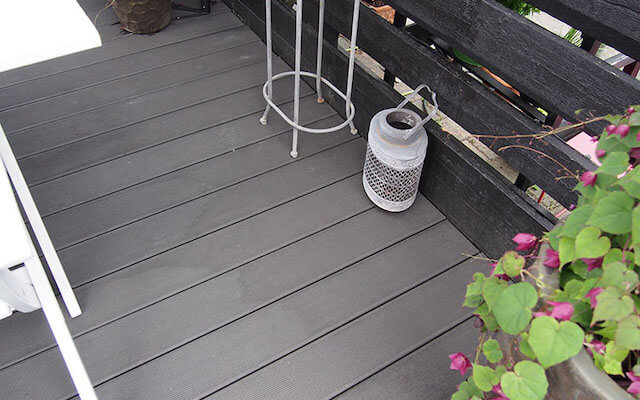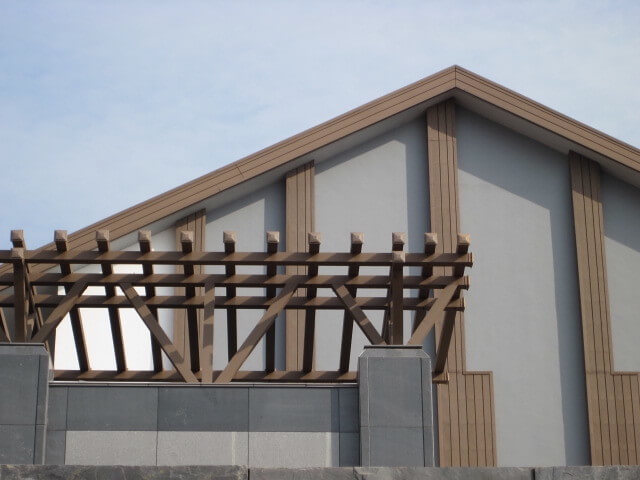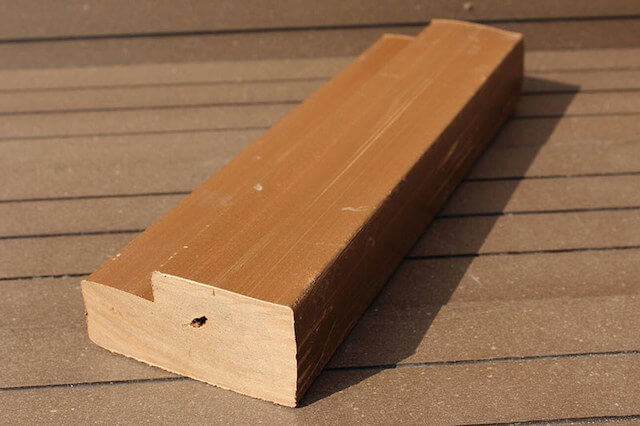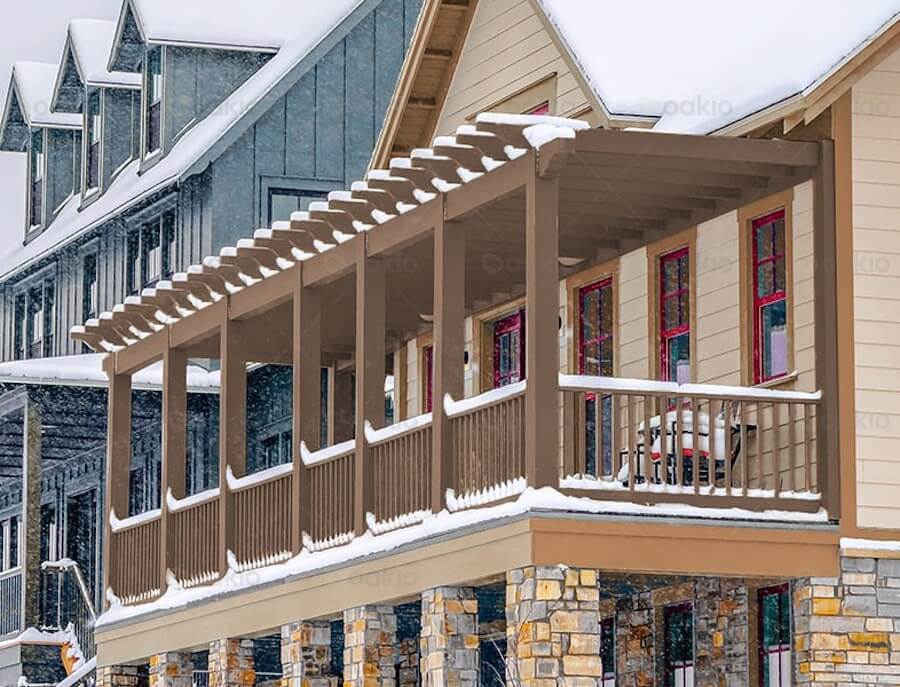WPC has become a prevalent material used for building many constructions due to its superior qualities and excellent durability. Nowadays, WPC pergolas have gotten even more popular than traditional wooden products.
So, what is WPC pergola? Is the WPC pergola better than the other materials?
Do the WPC pergolas have any setbacks? If you are wondering about these questions, don’t miss out on this post!
I will discuss the basics of the WPC pergola that will help you significantly before deciding to build one in your backyard. Now let’s jump straight in.
Table of Contents
What Is WPC Pergola?
WPC pergola is a standard pergola construction made of wood-plastic composite materials. They are a mix of thermoplastics like polypropylene (PP), polylactic acid (PLA), and wood fiber.
Besides their composite wood fiber and thermoplastic components, WPC pergolas also contain inorganic filler or lignocellulosic materials. You can consider WPC as a subsidiary of natural fiber materials.
Overview
WPC was invented in 1960 in Milan by Covena, Italy. Its patent belongs to Dino and Macro, two Dino brothers. WPC is more friendly to the environment, and it doesn’t require much maintenance like the other materials.
Due to its high durability and security, WPC is highly applicable for construction purposes. Besides pergolas, many housing constructions also require WPC to build floor and ceiling, and even furniture.
These advantages are vital for pergolas since they have to bear different water conditions and harsh environmental impacts throughout the year.
In the following sections, I will discuss WPC pergolas’ strengths in more detail.

Production
The manufacturers blend heated thermoplastic resin and wood particles thoroughly to produce WPC. They also combine more additives like blowing agents, lubricants, and foaming agents to perfect WPC material.
What Are The Advantages And Disadvantages Of WPC Pergola?
While the natural wooden pergolas possess a beautiful vintage look and high value, they will wear down significantly over time. Environmental factors like rainfall, snow, and moisture will slowly ruin the pergola structure and surface.
Meanwhile, the WPC pergola rises as a modern and more affordable substitute with excellent durability. They also provide a contemporary and eye-catching surface that can be modified into your favorite colors.
So, what makes the WPC pergola so popular? What advantages and setbacks should you expect when using WPC for your pergola?
Keep reading the sections below, and I will show you!
Advantages
Since the manufacturers add many foaming agents, lubricants, and stabilizers into WPC, this material possesses many excellent qualities that cannot be found in natural wood.
The most noticeable advantage of WPC lies in its excellent durability and weather-resistant capacity.
WPC pergolas are immune to wind, moisture, and rainfall, thus retaining their beautiful and sleek surface for much longer.
In addition, the lubricants make WPC pergolas look very sleek and eye-catching, turning them into a perfect match for modern housing constructions.
In addition, WPC is very flexible and can be bent into any shape or size you like.
You can easily ask the WPC provider to customize its material and construct your dream pergola. This process is much more affordable and effortless than constructing natural wooden pergolas.
Furthermore, WPC pergolas can resist fire and protect human lives from this potential threat. They don’t cause any harm to human health and the environment thanks to their safe properties.
Another significant advantage is the much lower price of WPC compared to natural woods. It can save you half the money spent if you decide to build a WPC pergola instead of a wooden one.

Disadvantages
There aren’t many significant setbacks when building a WPC pergola.
If you have a vintage house with many wooden pieces of furniture, a WPC pergola may not fit well due to its modern look.
Another setback is the lack of natural wooden properties, making the WPC pergolas less valuable than natural wooden constructions. In addition, WPC can resist fire, but their thermal tolerance is also lower than natural wood.
How To Choose WPC Pergola?
There are many types of WPC used for building pergolas. If you are planning on constructing a WPC pergola, the tips below will greatly help.
Know The Differences In The Materials
The WPC materials manufactured in China and Asian countries are usually made of discarded wood from the plywood industry.
With added glue, these materials may be poisonous since they have a high amount of formaldehyde.
Therefore, not all WPC materials are safe for human contact. Ensure that you choose really high-quality WPC manufactured by reputable producers.
They might have higher prices, but the quality, in the long run, is totally worth it.
Look For Antioxidant And Anti-Uv Agents
Ensure that you choose WPC materials with antioxidant and anti-UV properties.
They may increase the cost a little, but those features are vital for your pergola since it is exposed to the air and sunlight year-round.
Check The Density & Weight
The acceptable weight for WPC pergola materials is between 2.5 and 3 kilograms per meter. They must also have high density to ensure the durability of your pergola.
Know The Technological Differences
Different WPC materials feature distinct technological differences and qualities.
If you really don’t know which is the most suitable material for your pergola, consult professional builders for recommendations.
They will tell you the technologies and features of a certain type and decide if it perfectly suits your usage needs.

FAQs
Is WPC Good For Outdoor?
Yes, WPC is an excellent material for building outdoor infrastructure.
Besides its beautiful look and high durability, WPC can resist environmental factors like wind, moisture, and rainfall very efficiently.
Is WPC Waterproof?
WPC is immune to water and fire. Some high-end WPC materials also possess vinyl flooring that protects the surface better from moisture and water, making them a perfect option for outdoor constructions.
Is WPC Toxic?
It depends on the type of WPC you use. The high-quality WPC materials that don’t use glue and harmful chemical properties are completely safe for human health and the environment.
Can WPC Be Painted?
Yes, though the WPC’s surface is lubricated, you can still paint beautiful decorative patterns on this material. However, not all painting materials can stick to WPC’s surface.
Can WPC Be Used For Exterior Walls?
WPC is durable and secure, making it an ideal option for building indoor and outdoor wall panels. In addition, this material is also affordable and easy to find.
Final Thoughts
WPC pergolas are made of WPC (wood-plastic composite) materials. They possess excellent durability and security, along with significant advantages.
If you are planning on building a WPC pergola, ensure that you choose really high-quality materials to achieve the highest results. Thank you for reading!

